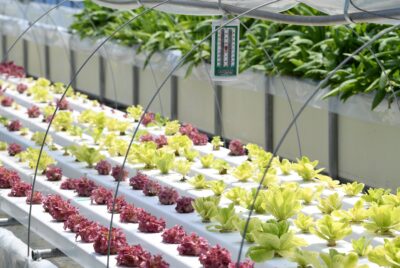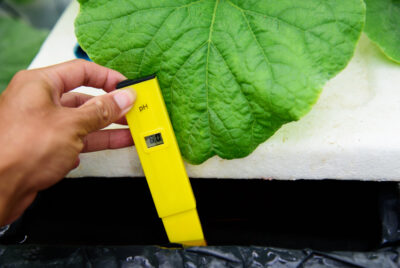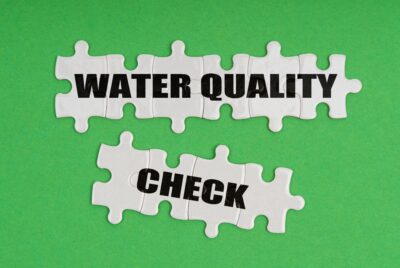Hydroponic Strawberries
We may earn a commision from purchases made using our links. Please see our disclosure to learn more.
Homegrown Hydroponic Strawberries Throughout The Year.
As an enthusiast and advisor in the indoor hydroponic gardening niche, I am thrilled to share my insights and suggestions on growing hydroponic strawberries. Hydroponics, the practice of growing plants without soil, offers numerous benefits and allows you to enjoy fresh, juicy strawberries right in the comfort of your own home. In this article, I will guide you through the process of growing silless strawberries, from choosing the right system to harvesting your bountiful crops.
Introduction
Hydroponics has revolutionized the way we grow plants by providing an efficient and controlled environment. This method eliminates the need for soil, as plants receive their hydroponic fertilizer directly from a nutrient-rich solution. Hydroponic gardening offers several advantages, such as faster growth rates, higher yields, and the ability to grow plants year-round.
What is Hydroponics?
Hydroponics is a cultivation technique that involves growing plants in a water-based hydroponic fertilizer solution. Instead of relying on soil, plants are placed in a growing medium or suspended in the nutrient solution. By providing the necessary hydroponic fertilizer directly to the plant roots, hydroponics maximizes nutrient uptake and minimizes water waste.
Benefits of Hydroponic Gardening
Soilless gardening presents several benefits that make it an attractive option for growing strawberries. Firstly, it allows you to grow plants in limited spaces, making it ideal for indoor gardening. Secondly, hydroponic systems require less water compared to traditional soil-based cultivation methods. Additionally, hydroponics enables precise control over hydroponic fertilizer levels, pH, and other environmental factors.
Growing Soilless Strawberries
Strawberries thrive in soilless systems due to their shallow root systems. They can be grown using various hydroponic techniques, such as nutrient film technique (NFT), deep water culture (DWC), or a vertical hydroponic garden. The choice of system depends on the available space, desired yield, and personal preference.
Choosing the Right Hydroponic System
Selecting the appropriate hydroponic system is crucial for the success of your strawberry plants. Consider factors like space availability, budget, and maintenance requirements. NFT systems are popular for their simplicity and suitability for smaller setups, while DWC systems provide excellent oxygenation to the plant roots. Vertical tower systems are perfect for maximizing space utilization.
Selecting Strawberry Varieties
When choosing strawberry varieties for soilless cultivation, opt for day-neutral or everbearing types, as they produce fruit continuously throughout the growing season. Varieties like ‘Albion,’ ‘Seascape,’ and ‘Fresca’ are well-suited for hydroponic systems due to their compact growth habits and delicious berries.
Setting Up Your Hydroponic System
Once you’ve selected the system and strawberry variety, it’s time to set up your garden. Follow the manufacturer’s instructions for assembling the system and ensure proper installation of the hydroponic fertilizer reservoir, pumps, and irrigation components, and all related hydroponic instruments and controllers. Place the growing medium or support structure in the designated areas, ensuring stability and proper spacing for the strawberry plants.
Hydroponic Fertilizer Solutions
Strawberries require a well-balanced hydroponic fertilizer solution to thrive in a soilless environment. Use a specialized hydroponic fertilizer that contains essential macronutrients (nitrogen, phosphorus, and potassium) as well as micronutrients (iron, manganese, zinc, etc.). Follow the recommended dilution rates and feeding schedules provided by the manufacturer to ensure optimal plant nutrition.
Monitoring and Adjusting pH and EC Levels
Maintaining the correct pH and electrical conductivity (EC) levels in your system is vital for the health and productivity of your strawberry plants. Regularly test the pH and EC of the hydroponic fertilizer solution using a reliable meter or testing kit. Adjust the pH using pH up or pH down solutions to keep it within the optimal range of 5.5 to 6.5. Likewise, adjust the EC levels by diluting or adding hydroponic fertilizer as necessary.
Lighting and Temperature Considerations
Proper hydroponic grow lights and temperature control are crucial for successful cultivation. Strawberries require a minimum of 6 to 8 hours of direct sunlight or high-intensity grow lights per day. LED grow lights are an excellent choice for indoor hydroponic gardens due to their energy efficiency and customizable hydroponic grow light spectrums. Maintain a temperature range of 65-75°F (18-24°C) during the day and slightly cooler temperatures at night for optimal growth.
Watering and Fertilizing Tips
Strawberries require consistent watering to keep the growing medium moist but not waterlogged. Monitor the moisture levels regularly and adjust the frequency and duration of watering accordingly. Avoid overwatering, as it can lead to root rot and other plant diseases. Supplement the hydroponic fertilizer solution with additional fertilizers according to the plant’s growth stage and nutrient requirements.
Pests and Diseases in Hydroponic Gardens
While hydroponic systems reduce the risk of soil-borne pests and diseases, it’s essential to remain vigilant. Common pests such as aphids, spider mites, and thrips can still affect your strawberry plants. Implement preventive measures such as regular inspection, introducing beneficial insects, and using organic pest control methods when necessary. Maintain cleanliness and proper hygiene in your hydroponic setup to minimize the risk of disease.
Harvesting and Enjoying Your Strawberries
The exciting moment arrives when your strawberries are ready for harvest. Gently pluck ripe berries from the plants, taking care not to damage the delicate fruits or the surrounding foliage. Enjoy the sweet, juicy rewards of your hard work right away, or incorporate them into delicious recipes like fresh salads, smoothies, or desserts.
Conclusion
Soil-free berry farming is a rewarding endeavor that allows you to enjoy the pleasure of homegrown fruits throughout the year. With the right hydroponic system, suitable strawberry varieties, proper care, and attention to environmental factors, you can experience bountiful harvests. Embrace the advantages of hydroponics and embark on your journey to create a thriving indoor Eco-friendly hydro garden filled with vibrant strawberry plants.
FAQ’s
Can I grow strawberries in a small apartment?
Absolutely! Hydroponics is an excellent solution for small spaces. With compact systems like NFT or vertical towers, you can cultivate strawberries even in a limited apartment setting.
How often should I check the pH and EC levels in my hydroponic system?
It’s recommended to check the pH and EC levels at least once a day or every few days to ensure optimal hydroponic fertilizer absorption and plant health. Monitoring these levels regularly allows you to make timely adjustments and maintain a stable growing environment.
Are soilless strawberries organic?
Yes, they can be grown using organic practices. By using organic fertilizer solutions and pest control methods, you can cultivate indoor-grown strawberries in an environmentally friendly and chemical-free manner.
Can I reuse the fertilizer solution for soil-free berry farming?
It is generally recommended to refresh the solution periodically to ensure the plants receive a well-balanced mix of hydroponic fertilizer. Over time, the hydroponic fertilizer solution may become depleted or imbalanced.
Can I grow strawberries without hydroponic grow lights?
While strawberries require sufficient light for optimal growth, if you have access to a location with ample natural sunlight, it is possible to grow strawberries without artificial lighting. However, artificial lighting can be beneficial, especially in areas with limited sunlight or during the winter months when daylight hours are shorter.
What are some common troubleshooting tips when growing hydro-cultivated strawberries?
First, check the pH and EC levels to ensure they are within the appropriate range. Address any hydroponic fertilizer deficiencies or imbalances promptly. Pay attention to water quality, as impurities can affect plant health. Monitor for pests and diseases regularly and take immediate action if necessary. Lastly, ensure proper ventilation and air circulation to prevent mold or fungal growth.





Comments are closed.